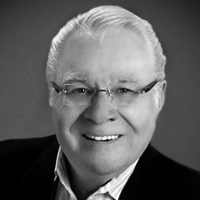Question
Approximately 10 years ago there was quite a buzz about transcranial CROS hearing aid fittings. I haven't seen anything recently about this fitting. Do you have anything new regarding this type of fitting, in particular:
Have there been some guidelines developed for predicting gain and output by frequency?
Have there been guidelines developed for evaluating these fittings?
Answer
While one might argue that all CROS fittings are ''transcranial'', usually the term refers to a bone-conducted ''crossover'' of the signal. This can be accomplished by:
My answer assumes the question was referring to the air-conduction transcranial CROS version, as this is the approach most commonly associated with the term. It is true that not much has been written about the transcranial CROS in recent years. I don't interpret this to mean that this CROS approach is less popular now than before, but rather, that everything that needed to be said was said. The transcranial approach, where only one hearing aid (maybe even a CIC model) is used continues to be an attractive option for many patients, as other CROS methods might require the use of two hearing aids, a hard wired connection, bulky hearing aids, or in some cases a surgical procedure.
The goal of this type of CROS fitting is to place an air-conducted signal in the ''bad'' ear that is loud enough that it crosses over via bone conduction to the ''good'' ear. The patient's hearing in the good ear and their interaural attenuation will determine what output levels are needed. It is first necessary, therefore, to develop ''fitting targets.''
By using probe-microphone equipment to measure ear-canal SPL, it is possible to determine what output will ''crossover'' to the good ear. Frequency-specific pure-tone signals are delivered from the audiometer-and, the transducer used does matter. It's best to use an insert receiver, placed at approximately the depth of the hearing aid, using a tip that has a hardness that is similar to the hearing aid. Hard rubber immittance tips coupled to an insert earphone is one option. When the patient says he hears the tones in the good ear, the real-ear SPL in the bad ear is measured for each frequency. In general, we'd like to place speech at least 15-20 dB SL in the good ear, so adding 20 dB or so to the measured values will provide the REAR targets for the hearing aid fitting (e.g., if the 2000 Hz signal is heard in the good ear at 80 dB RESPL, then the REAR target at 2000 Hz for an average-level speech- shaped signal would be 100 dB RESPL for this frequency). The mechanical vibrations of an actual hearing aid (which will influence the transmission) are different than those of the insert used for testing, so these targets still aren't as precise as we would like.
Other than probe-mic testing, it is difficult to verify the effectiveness of the transcranial CROS fitting in the office or clinic. However, it's probable that benefit only will occur when:
Since we know that the transcranial bone-conducted signal at the cochlea of the good ear probably will not be more than 30-40 dB SPL, for the above two conditions to occur the patient would need to be listening to soft speech in quiet, with the speech delivered from the side of his bad ear (due to head shadow, the amplified bone-conducted high frequencies of speech now will be louder in the good ear than the air-conducted signals traveling around the head). If this listening situation occurs frequently in the patient's everyday life, and he considers this listening situation important, then he just might become a regular transcranial CROS user.
H. Gustav Mueller, Ph.D. has an audiology consulting practice in Nashville, Tennessee.
He is the senior audiology consultant for Siemens Hearing Instruments, Contributing Editor for The Hearing Journal, and teaches audiology classes at Vanderbilt, Central Michigan, Nova Southeastern and Northern Colorado Universities.
Click here to visit the Siemens Hearing Instruments website.

